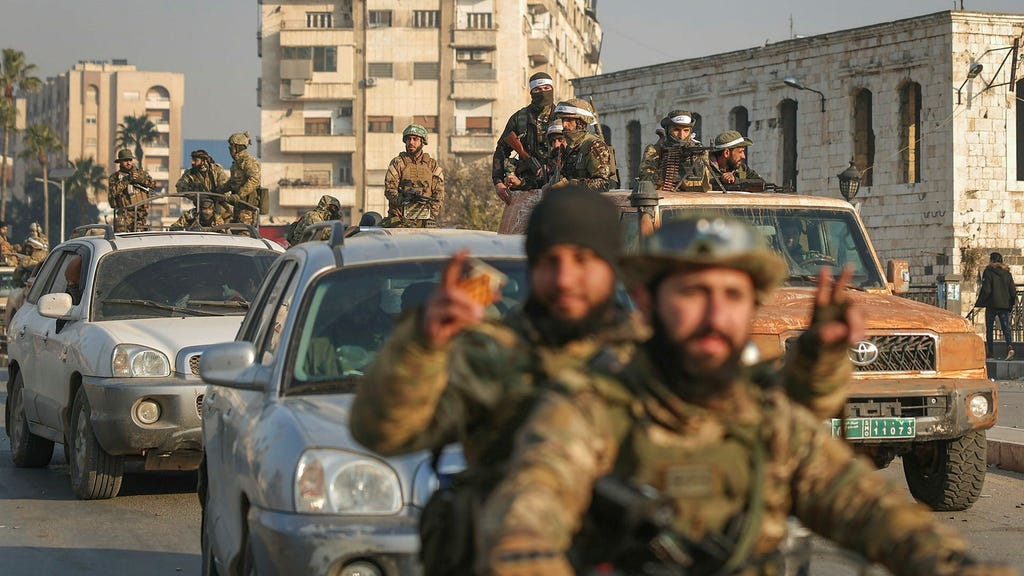The Syrian populace of Aleppo, long ravaged by civil war, experienced a brief respite from hardship following the rebel takeover of the city. Bread prices plummeted, and electricity, a rare commodity, flowed for several hours. Rebels assured the weary civilians that their presence signified liberation, not oppression, a stark contrast to the regime’s narrative. Danielle Barsoum Malki, a former Syria specialist at the Olof Palme International Center, views this shift as part of a meticulously orchestrated offensive by rebel groups, backed by powerful financial players capable of manipulating markets and restoring essential services. This calculated strategy combines military advances with a concerted effort to improve civilian infrastructure, signaling a move toward winning hearts and minds. This reflects the dominant rebel group, Hayat Tahrir al-Sham (HTS), attempting to rebrand itself from a terror-labeled Islamist movement to liberators. This pragmatic approach aims to garner support from the war-weary population, suffering under crippling inflation and economic collapse. However, Barsoum Malki believes this tactic is likely a short-term ploy aimed at consolidating control, rather than a sustainable long-term solution.
The complex dynamics of the Syrian conflict are further complicated by the involvement of external actors, particularly Turkey. Turkey provides direct and indirect support to several rebel groups engaged in the current offensive, including the Syrian National Army (SNA). The SNA, a Turkish-backed umbrella organization, incorporates around 40 different armed opposition groups effectively controlled by Turkey, as per an analysis by the EU’s asylum support office, EASO. While HTS has publicly stated its disinterest in fighting Kurdish forces in northeast Syria, the SNA holds a less amicable stance towards them. Adding to the complexity, HTS aims to overthrow Assad’s government, while Turkish President Erdogan simultaneously seeks a resolution with Assad. This apparent contradiction highlights the intricate web of alliances and conflicting agendas at play. Assad has reportedly been in dialogue with the Kurdish-dominated Syrian Democratic Council (SDC) in northeast Syria, further muddying the waters. Barsoum Malki underscores the intricate nature of the situation, highlighting Turkey’s desire for increased control, its opposition to Kurdish empowerment in both northern and southeastern Syria, and the overall fragmentation of the opposition.
The potential consequences of Assad’s overthrow are fraught with uncertainty. Barsoum Malki argues that a military removal of Assad would destabilize not only Syria but the entire region, potentially leading to further fragmentation. She doubts HTS’s ability to form a stable government or gain long-term popular support. The already fragile nation risks splintering if Damascus falls, creating a power vacuum vulnerable to further conflict and external interference. The Syrian regime’s fate is deeply intertwined with Russia’s actions, while the interests of the US and Israel further complicate the situation. Israel’s ongoing conflicts in neighboring Lebanon and against Iranian presence within Syria contribute to the current instability. Meanwhile, the unpredictable nature of US foreign policy under the then-president further complicates the scenario. The US maintains strong ties with the Kurdish administration in northeast Syria, but the overall volatile situation remains difficult to manage.
The current rebel offensive underscores a sense of urgency, as these groups seemingly refuse to wait for the outcomes of talks between Russia, Turkey, and Iran. This proactive stance raises serious concerns about the potential impact on civilians, who are ultimately the most vulnerable in this protracted conflict. Neighboring countries, Lebanon and Jordan, have already closed their borders, highlighting the regional spillover of the crisis. Barsoum Malki emphasizes the collective European interest in de-escalation and urges European nations to actively pursue a political solution in accordance with UN Security Council Resolution 2254. This resolution calls for a ceasefire and political transition in Syria, but its implementation has been hampered by the complex interplay of actors and interests within the country.
The current offensive highlights a calculated strategy by rebel groups to seize control through a combination of military force and civilian appeasement. This tactical shift, potentially backed by powerful financial actors, is aimed at winning over the war-fatigued populace by providing essential services and portraying themselves as liberators. However, the sustainability of this approach remains questionable, especially given the deep-seated divisions within the opposition and the complex external influences at play.
The evolving situation underscores the fragility of the Syrian state and the potential for further fragmentation. The competing interests of regional and international actors, coupled with the unpredictable actions of key players, add layers of complexity to an already volatile situation. The international community, particularly European nations, has a vested interest in pursuing a political solution to prevent further escalation and protect the vulnerable civilian population. However, achieving a lasting peace in Syria requires addressing the root causes of the conflict, fostering genuine dialogue between warring factions, and establishing a framework for a stable and inclusive future. This complex undertaking demands a concerted international effort, guided by the principles of humanitarian intervention and respect for international law.














